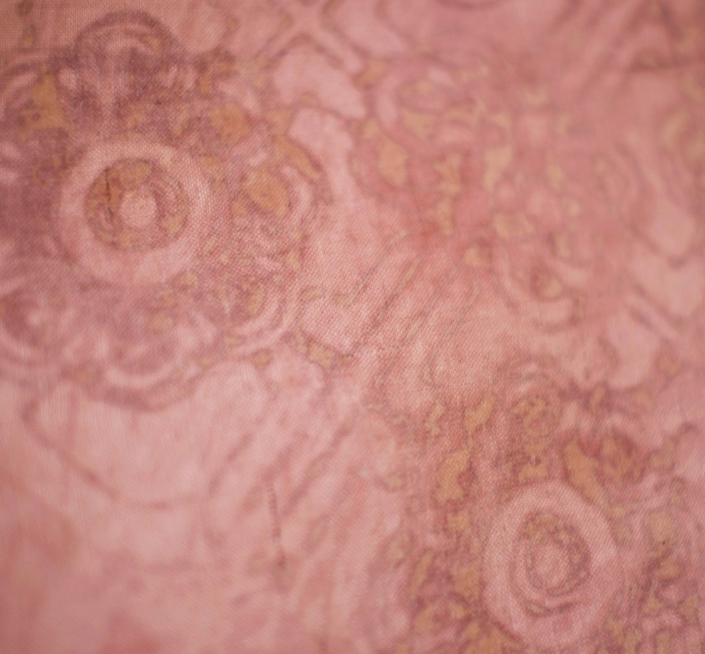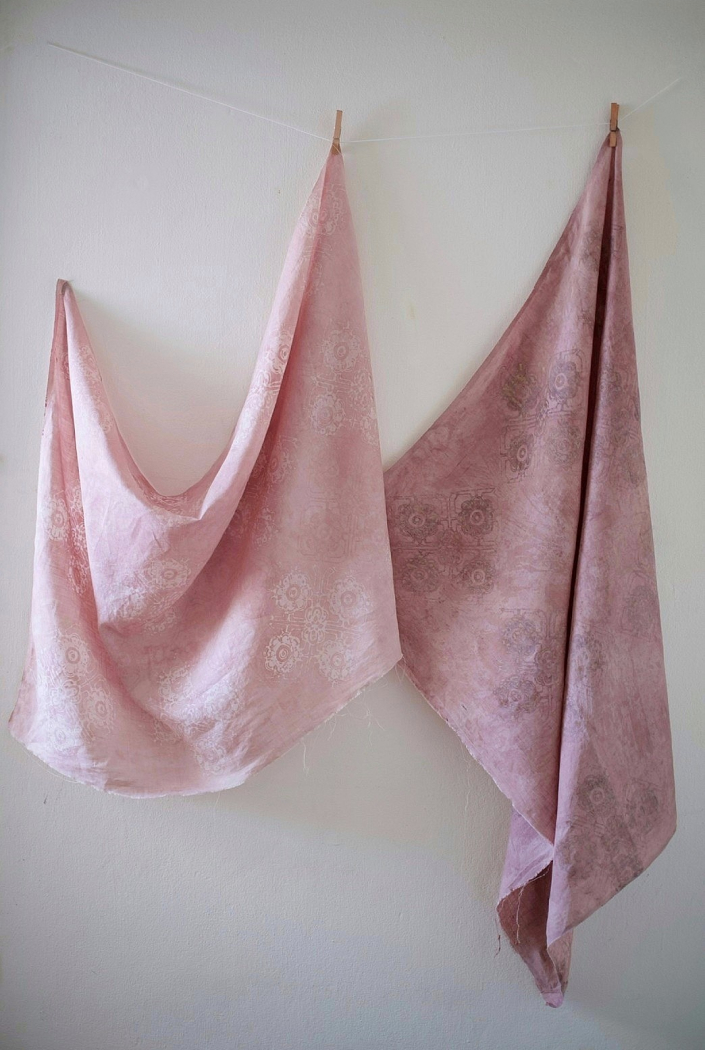Songkhla Old Town
Dr. Chamaiporn Mitinunwong
Introduction
Batik creation printed with the pattern of the identity of Songkhla Old Town represented Thai people in the south living together with love and unity under the multiculturalism of art; and Thai, Chinese, and Malay cultures. Batik printing technique with natural dyes followed the concept of sustainability to reduce the use of chemicals and environmental destruction and build awareness of living with nature with creativity for the bright future of young generations in the lively environment and eco-friendly pleasant town.
Thus, the researcher used the pattern from the wooden cooking block of Sampannee with perforated lines imitating the wooden ventilators of the ancient house in the old town Chinoprotugese pattern from “Ban Nakhon Nai,” an ancient house aged 300 years, located on Culture Street, Songkhla Province for new pattern design, along with the concepts of batik creation and candle mold pumping technique to impede colors, which is a local fabric of Thai Malays in the south of Thailand for wearing when they perform religious rituals. The operation method was divided into 3 phases: Phase 1 was the work used to study the literature on the process of making Batek and cold dyeing in natural colors, Phase 2 was a metal block and technique experiment, and Phase 3 was creating works and draw conclusions The findings reveal that the first fabric: Cold dyeing from noni leaves and roots,
banana sap, and sappan heartwood created a light purple fabric with the clear printed pattern and candle lines, and The second fabric: Cold dyeing from noni leaves and roots, banana sap, and the rusty water created dark purple fabric, but the printed pattern was not as clear as the first fabric. The edge of the pattern that impeded the candle turned black due to the reaction of the rusty water to the fabric.
Conclusion
The first fabric: Cold dyeing from noni leaves and roots, banana sap, and sappan heartwood created a light purple fabric with a clear printed pattern and candle lines, of which sizes were small and could collect the details of the pattern nicely. The pattern that impeded the candle looked like marbles, obtained by squeezing the fabric while soaking.
The second fabric: Cold dyeing from noni leaves and roots, banana sap, and the rusty water created dark purple fabric, but the printed pattern was not as clear as the first fabric. The edge of the pattern that impeded the candle turned black due to the reaction of the rusty water to the fabric. Thus, The edge of the pattern at this part turned black. And the overall pattern was not as clear as the fabric that was not soaked in the rusty water.
Natural dyes created beautiful and dark colors, particularly dark red from sappan heartwood.
Objectives Aims or Purposes
To “Clean” or improve Design Thinking process to get better customer’s insights by eliminating designer’s biases.
Process or Methods
- Batik creation, process, technique, and printing with the metal block were studied.
- Natural dyes from plants and cold dyeing techniques were studied.
- Trial: The fabrics were printed with the metal block.
- Trial: Natural dyes of noni leaves and roots, banana sap, and sappan heartwood
- The work was created and spread.
Techniques and materials
Fabric Print, LightBox, Installation
Size or Mins.
60×120 cm.

